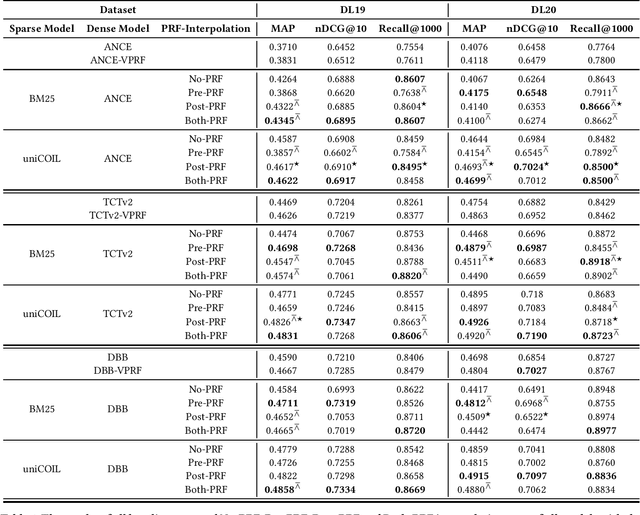To Interpolate or not to Interpolate: PRF, Dense and Sparse Retrievers
Paper and Code
Apr 30, 2022
Current pre-trained language model approaches to information retrieval can be broadly divided into two categories: sparse retrievers (to which belong also non-neural approaches such as bag-of-words methods, e.g., BM25) and dense retrievers. Each of these categories appears to capture different characteristics of relevance. Previous work has investigated how relevance signals from sparse retrievers could be combined with those from dense retrievers via interpolation. Such interpolation would generally lead to higher retrieval effectiveness. In this paper we consider the problem of combining the relevance signals from sparse and dense retrievers in the context of Pseudo Relevance Feedback (PRF). This context poses two key challenges: (1) When should interpolation occur: before, after, or both before and after the PRF process? (2) Which sparse representation should be considered: a zero-shot bag-of-words model (BM25), or a learnt sparse representation? To answer these questions we perform a thorough empirical evaluation considering an effective and scalable neural PRF approach (Vector-PRF), three effective dense retrievers (ANCE, TCTv2, DistillBERT), and one state-of-the-art learnt sparse retriever (uniCOIL). The empirical findings from our experiments suggest that, regardless of sparse representation and dense retriever, interpolation both before and after PRF achieves the highest effectiveness across most datasets and metrics.
 Add to Chrome
Add to Chrome Add to Firefox
Add to Firefox Add to Edge
Add to Edge